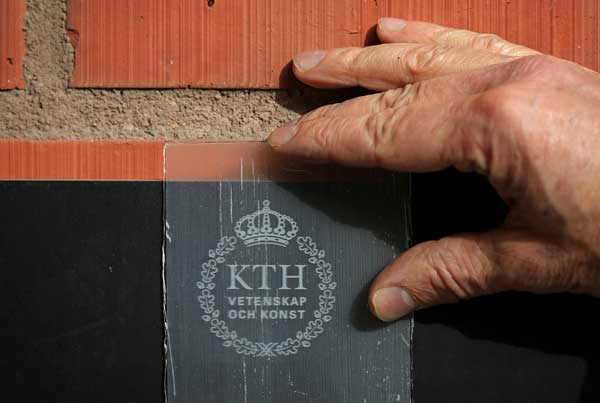The windows of the future could be made from transparent wood according to Swedish researchers.
Long regarded as one of the best and cheapest construction materials, wood has never been the natural choice for glazing, but that could be about to change according to researchers at Stockholm’s KTH Royal Institute of Technology ![]() who have developed a transparent wood material that they say is suitable for mass production.
who have developed a transparent wood material that they say is suitable for mass production.
The optically transparent wood is actually a type of wood veneer in which the lignin, a component of the cell walls, is removed chemically.
"When the lignin is removed, the wood becomes beautifully white. But because wood isn't not naturally transparent, we achieve that effect with some nanoscale tailoring," says Professor Lars Berglund at the Institute’s Wallenberg Wood Science Centre.
"The white porous veneer substrate is impregnated with a transparent polymer and the optical properties of the two are then matched."

The transparent wood is made by removing the lignin in the wood veneer.
While optically transparent wood has been developed for microscopic samples in the study of wood anatomy, the KTH project introduces a way to use the material on a large scale. The finding was recently published in the American Chemical Society journal, Biomacromolecules ![]() .
.
The team suggest that transparent wood panels could be used for windows, and semitransparent facades, when the idea is to let light in but maintain privacy but it's the large scale possibilities that are driving the next phase of the research.
"No one has previously considered the possibility of creating larger transparent structures for use as solar cells and in buildings”, Berglund says.
"Transparent wood is a good material for solar cells, since it's a low-cost, readily available and renewable resource. This becomes particularly important in covering large surfaces with solar cells."
Among the work to be done next is enhancing the transparency of the material and scaling up the manufacturing process, and also working with new types of wood.
"Wood is by far the most used bio-based material in buildings. It's attractive that the material comes from renewable sources. It also offers excellent mechanical properties, including strength, toughness, low density and low thermal conductivity," says Berglund.
Optically transparent wood is not entirely new in 2009 a Japanese team detailed their creation of a "wood-cellulose nanocomposite" ![]() which they hoped would form the basis of flexible LED lighting.
which they hoped would form the basis of flexible LED lighting.


